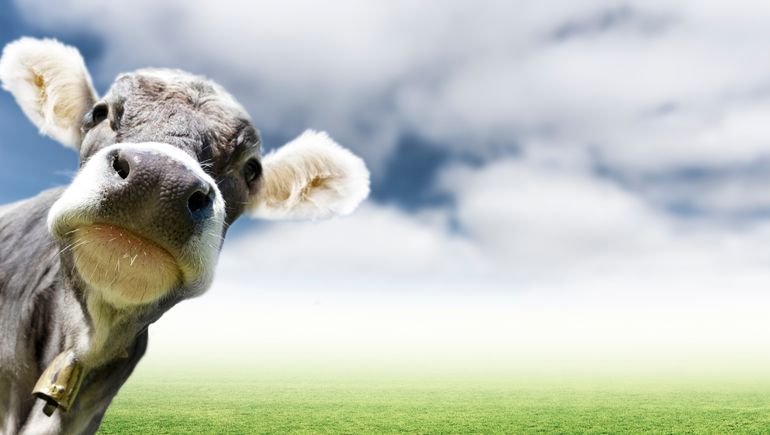From farm to pharma: How cows could play a role in the next flu breakthrough

Influenza killed between 12,000 and 52,000 people annually in the U.S. from 2010 and 2020, according to the CDC. Yet as of May 2022, the vaccination rate among U.S. adults was just 54% for the 2021-2022 flu season.

Eddie Sullivan, CEO, SAb Biotherapeutics
Permission granted by SAb
And in some cases, when the flu breaks out, it can spread like wildfire.
Still, even though flu vaccines are the best line of defense, they aren’t recommended or effective for everyone.
“One of the populations that does get vaccinated but probably benefits the least from vaccination is immunocompromised patients and patients over 65 that sometimes do not respond as well to the vaccines,” said Eddie Sullivan CEO, co-founder and president of SAb Biotherapeutics. “They have very few alternatives or good treatments.”
Now, the clinical-stage biopharma is working on a novel alternative with cow antibodies that have been genetically engineered into human antibodies to not only prevent but treat infectious diseases. Currently, their products targeting seasonal influenza and COVID-19 are in clinical development. They are also in preclinical development with a candidate aiming at immune and autoimmune disorders, such as Type 1 diabetes.
The company recently announced positive safety and efficacy data from phase 1 and 2a clinical trials of its influenza therapy, SAB-176, as well as positive top-line results from a phase 3 trial for its COVID-19 therapy SAB-185.
SAB’s novel immunotherapy platform produces specifically targeted, fully-human, polyclonal antibodies that are created in cows. Unlike some traditional vaccines, which elicit an immune response and create antibodies in the human patient, SAB’s technology vaccinates the cow and gives humans the antibodies it produces.
“We immunize the cows (against) influenza, but we don’t just immunize them … we actually hyper immunize them.”

Eddie Sullivan
CEO, SAb Biotherapeutics
And although they’re animal antibodies, they’re engineered to be “fully human, rather than being a foreign protein to humans,” Sullivan said.
Through genetic engineering, SAb’s technology turns off the cow antibody genes and adds a human artificial chromosome that has the human antibody genes, which can prevent side effects like serum sickness.
“That’s what allows these animals to produce human antibodies, not cow antibodies,” Sullivan said. “Importantly, these antibodies have been charged against a specific disease — in this case influenza — and we have made the antibodies so that it covers a broad number of influenza viruses: both Type A and Type B influenza and many different strains within those two lineages.”
Recently, PharmaVoice talked with Sullivan about the influenza technology, which has received FDA breakthrough therapy and fast track designations.
This interview has been edited for brevity and style.
PHARMAVOICE: Tell me more about how your technology works.
EDDIE SULLIVAN: These are polyclonal immunoglobulins, or antibodies, that are produced in genetically engineered cattle. We actually immunize the cows (against) influenza, but we don’t just immunize them like we would humans; we actually hyper immunize them. They get a vaccine every 21 to 28 days. These cows are very special, though, because they have been engineered such that their antibody genes have been turned off and replaced with the human antibody genes.
So the antibody proteins that they produce are actually human proteins, not cow proteins. When they produce an immune response, and these animals become plasma donors three times per month, we take that plasma and we purify the human antibodies that have been targeted to flu out of their plasma. When we give that to a human, it is recognized as being a fully human protein rather than a cow protein.
Can you talk about cost and other differences between this therapy and other vaccines?
Immunotherapies on the whole are more expensive than vaccines for patients. The reason for this is because it’s a much more extensive process to produce the actual antibodies than to produce the vaccines. In fact, we have to produce vaccines for the cows just to immunize them. Then we have to process the antibodies that come from the animals to use as the therapeutic. So immunotherapies are a more extensive and, by virtue of that fact, a more expensive process than the development or the production of a vaccine.
But again, it’s a very specific patient population that benefits the most from what we’re suggesting. This is not a competition with (other) vaccines. It’s actually complementary to vaccines, particularly for patient populations that really don’t receive significant benefit from the vaccines themselves.
The only patients that would need to get this are those that are at high risk for developing severe disease, either because they’re immune compromised in some way or they have some other significant medical condition that would indicate that they would suffer more dramatically from influenza infection.
How do the FDA designations impact your drug development programs?
The fast track designation is for the entire 176 program. It allows us to have more frequent interaction with the FDA as we progress through the development of this program. It also allows us to submit the biologics license application on a rolling basis with the agency.
Breakthrough therapy is specific to an indication: Post-exposure prophylaxis in high-risk patient populations. What this means is that if a patient is exposed to influenza, they can actually take SAB-176, and it would prevent them from getting flu, essentially. If they have this virus, it will eliminate it so that they don’t even get sick.
You can imagine, in perhaps a long-term care facility like a nursing home, when one resident of that facility gets influenza it spreads through that facility like wildfire. We can envision that when a resident of these facilities gets influenza, you can give these targeted human immunoglobulins to the other patients and prevent them from getting sick.
Source link
#farm #pharma #cows #play #role #flu #breakthrough